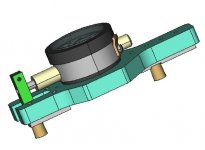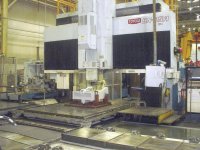Gordon B. Clarke
Banned
- Joined
- May 29, 2010
- Location
- Denmark
More and more are having their measuring equipment calibrated. Especially of course, those in ISO 9001 (and similar) shops and companies.
I still read though that some (my guess would be mainly old-timers) prefer the use of "feel" when for example using a micrometer. This makes me wonder how many of those that prefer "feel" have seen measuring equipment calibrated by a professional? How in fact is measuring equipment inspected before leaving the manufacturer?
If the measuring equipment has some kind of "attachment" to give a constant "feel" then that is what is used. Calibration results are documented very accurately but as to whether they can be repeated using "feel" and "experience" then I doubt this as I've never seen two individuals have exactly the same "feel" or "experience". The most common response from those types is "I've always done it like that and no-one is going to teach me or tell me differently".
Of course if the measuring equipment does rely on "feel" then I've never read or heard what or how much "feel" should be applied to obtain the same result from just about all. Personally I'd appreciated if the manufacturer of measurement equipment that did rely on "feel" gave some kind of ± for what they recommended be used.
I still read though that some (my guess would be mainly old-timers) prefer the use of "feel" when for example using a micrometer. This makes me wonder how many of those that prefer "feel" have seen measuring equipment calibrated by a professional? How in fact is measuring equipment inspected before leaving the manufacturer?
If the measuring equipment has some kind of "attachment" to give a constant "feel" then that is what is used. Calibration results are documented very accurately but as to whether they can be repeated using "feel" and "experience" then I doubt this as I've never seen two individuals have exactly the same "feel" or "experience". The most common response from those types is "I've always done it like that and no-one is going to teach me or tell me differently".
Of course if the measuring equipment does rely on "feel" then I've never read or heard what or how much "feel" should be applied to obtain the same result from just about all. Personally I'd appreciated if the manufacturer of measurement equipment that did rely on "feel" gave some kind of ± for what they recommended be used.




